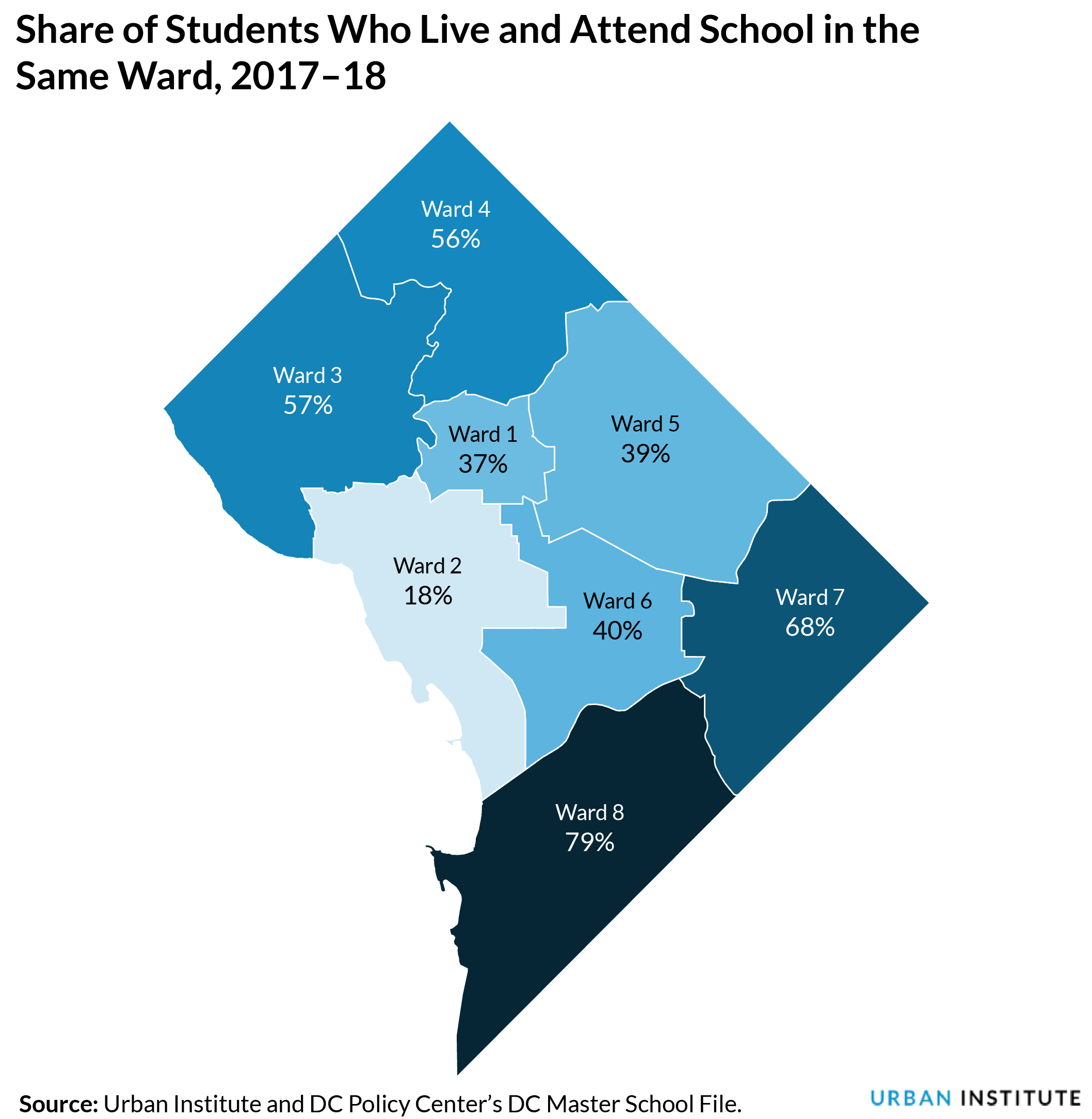
Chelsea Coffin of the DC Policy Center contributed to this post.
DC’s school choice policies allow families to send their children to schools outside their neighborhood boundaries, and more than three-quarters of DC students attend a school that isn’t their in-boundary or neighborhood school. Some of those students go to school in the same ward where they live, while others travel across the city. How can we tell whether students are attending schools in their own neighborhoods or wards? And what do we know about student travel to and from school?
To help stakeholders better understand DC school data, the Urban Institute partnered with the DC Policy Center to create a longitudinal dataset that puts several school-level datasets in one accessible place. The DC Master School File, which includes publicly available data on DC public schools and public charter schools from 2014 to 2018, features data on school information, enrollment, student characteristics, outcomes, school environment, and geography. (Also see the companion file and description document [PDF].)
The DC Master School File shows that citywide, about 53 percent of students attended school and lived in the same ward in the 2017–18 school year (and that number hadn’t changed much from previous years). But the share of students who attend school within their ward varies by ward. That percentage is significantly higher for students living east of the Anacostia River, as 68 percent of students in Ward 7 and 79 percent of students in Ward 8 attend school in the same ward where they live.

Even though students in Ward 8 are those most likely to live and attend school in the same ward, they are also among the least likely to attend their in-boundary public school, as only 20 percent of Ward 8 students go to the school in their neighborhood boundary. This pattern suggests that students are exercising choice but may prefer Ward 8 schools or face constraints to attending schools outside Ward 8.
Using data in the DC Master School File, we can also see where students are traveling to go to school. In the 2017–18 school year, more than 37,000 students (or 41 percent) crossed ward boundaries. For example, 488 students traveled from Ward 8 to Ward 4 for school, and 34 students traveled from Ward 4 to Ward 8. This shows how school choice is playing out differently among families in DC’s wards.
Urban Institute research on DC students shows that longer travel times from a student’s home to their school is associated with higher rates of school mobility and absenteeism. And transportation can be a major challenge for families looking to send their children to schools in different parts of the city, as DC doesn’t provide traditional school buses for most students.
In DC, the School Safety and Safe Passage Working Group is aiming to improve the travel conditions for students. The Office of the Student Advocate also developed a Safe Passage Community Resource Toolkit to share information about safety and transportation resources with students, families, and educators.
These student attendance and travel trends are just a few of the insights users could find in the new data resource, which includes information on school-level graduation rates, program types, waiting lists, and English learners. See the full dataset in the DC Master School File, and review the companion file and description document, to learn more.
Tune in and subscribe today.
The Urban Institute podcast, Evidence in Action, inspires changemakers to lead with evidence and act with equity. Cohosted by Urban President Sarah Rosen Wartell and Executive Vice President Kimberlyn Leary, every episode features in-depth discussions with experts and leaders on topics ranging from how to advance equity, to designing innovative solutions that achieve community impact, to what it means to practice evidence-based leadership.